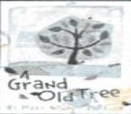题目内容
根据短文内容,从短文后的选项中选出能填入空白处的最佳选项。选项中有两项为多余选项。
We all know the importance of curiosity, and here are some tips on how to develop it.
Keep an open mind. This is essential if you are to have a curious mind. Be open to learning, unlearning, and relearning things. 1. Therefore, you should be prepared to accept this possibility and change your mind.
2. Most people just accept the world as it is. This way, they will certainly lose the “holy curiosity”. Try to dig deeper beneath the surface of what is around you. A sure way to dig deeper beneath the surface is asking questions. What, why, when, who, where, and how are the questions curious people always ask.
Don’t label anything as boring. Whenever you label something as boring, you close one more door of possibilities. Curious people are unlikely to consider things boring. 3. Even if they don’t yet have time to explore them, they will leave the door open to be visited another time.
Take learning as something fun. If you see learning as a burden, there’s no way you will want to dig deeper into anything. That will just make the burden heavier. However, if you think of learning as something fun, you will naturally want to dig deeper. 4.
Read diverse materials. It will introduce you to the possibilities and excitement of other worlds which may attract your interest in exploring further. One easy way to do this is through reading diverse materials. 5. It’ll feed your mind with the excitement of a new world.
A. It doesn’t matter that you don’t agree to others’ opinions.
B. Try to pick a book or magazine on a new subject.
C. Some things you know and believe might be wrong.
D. Don’t spend too much time on just one world.
E. Never take things as granted.
F. So look at life through the glasses of fun and enjoy the learning process.
G. Instead, they always see these things as a door to an exciting new world.
 天天向上口算本系列答案
天天向上口算本系列答案







